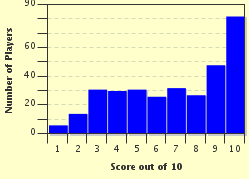Quiz Answer Key and Fun Facts
1. In which Christie novel, featuring Hercule Poirot, does a demure live-in companion take a hatchet to her elderly employer so that she can obtain enough money to open a tea shop?
2. Oscar Wilde, in "The Ballad of Reading Gaol", wrote "We are all guilty of killing the thing we love." That proves tragically true in this somber 1971 novel featuring Miss Marple, in which a middle-aged woman kills the young ward she loves altogether too well in order to prevent her marrying an unsuitable young man.
3. A man plotting to kill the ex-wife who left him for another man is nothing unusual. But the killer in this 1944 novel is so consumed with resentment for his ex-wife that he is willing to kill his dear old aunt in such a way that his ex will be suspected, arrested, and hanged for her murder. Strange, you say? Strange indeed, in this 1944 mystery featuring Superintendent Battle.
4. In this 1969 Christie novel, featuring Hercule Poirot, a talented but narcissistic and unstable gardener and his older female paramour commit a series of murders to realize his dream of creating a garden paradise on a Greek island.
5. Christie said that this 1949 work was one of her two favorites. The murderer is a twelve year-old girl, who poisons her grandfather because he wouldn't pay for her ballet lessons. She later poisons her nanny, who had called her "silly". Which of these novels features this precociously evil child?
6. In this 1962 novel featuring Miss Marple, a famous movie actress kills one of her fans after discovering that the woman had infected her with German measles years before.
7. As the title indicates, there is a touch of the theatrical to this 1934 mystery featuring Hercule Poirot. The culprit is, in fact, an actor, whose mind has begun to unravel. He fears that his old friend, a specialist in mental disorders, is planning to institutionalize him, and resolves to do away with him before he can do so. However this murder is preceded by the senseless- and random- poisoning of an elderly clergyman. The motive for his murder? It was nothing more than a "dress rehearsal" for the murder of the doctor.
8. Murder committed out of unrequited love is not unusual. But in which of these Miss Marple mysteries is the love in question that of a man for his half-sister?
9. In this 1939 Christie novel, a seemingly respectable elderly woman commits a series of murders which she hopes to pin on the man who had jilted her many years earlier.
10. The last novel featuring Hercule Poirot also features a murderer who is, in fact, not a murderer. That is, he does not commit the murders himself, rather he subtly goads desperate people to the breaking point, and stands innocently by as they commit the murders he has driven them to. His motive? The sheer pleasure of watching the mayhem he has caused. Which of these features Poirot's final bow?
Source: Author
jouen58
This quiz was reviewed by FunTrivia editor
LadyCaitriona before going online.
Any errors found in FunTrivia content are routinely corrected through our feedback system.

